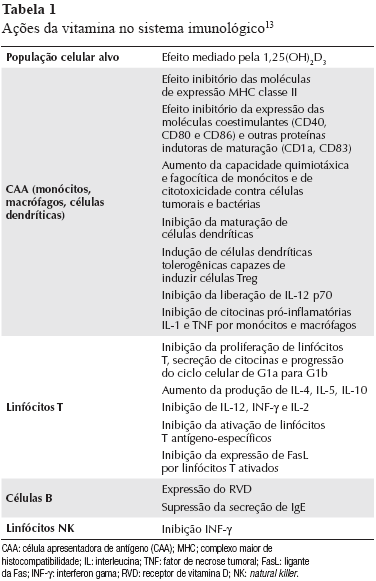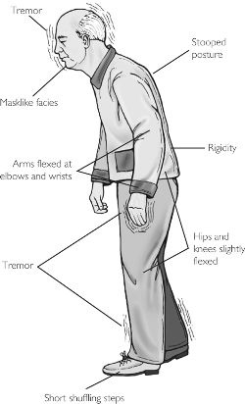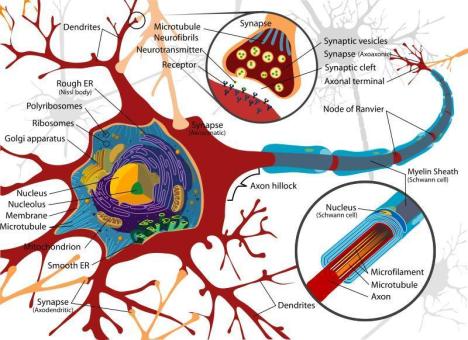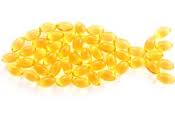A importância dos níveis de vitamina D nas doenças autoimunes
Revista Brasileira de Reumatologia
Print version ISSN 0482-5004
Rev. Bras. Reumatol. vol.50 no.1 São Paulo Jan./Feb. 2010
http://dx.doi.org/10.1590/S0482-50042010000100007
ARTIGO DE REVISÃO
http://www.scielo.br/scielo.php?pid=S0482-50042010000100007&script=sci_arttext&tlng=eshttp://www.scielo.br/scielo.php?pid=S0482-50042010000100007&script=sci_arttext&tlng=es
A importância dos níveis de vitamina D nas doenças autoimunes
Cláudia Diniz Lopes MarquesI, Andréa Tavares DantasII, Thiago Sotero FragosoIII, Ângela Luzia Branco Pinto DuarteIV
IReumatologista, Doutora em Saúde Pública e Tutora da Escola Pernambucana de Medicina – FBV/IMIP
IIEx-residente do Serviço de Reumatologia do HC-UFPE e aluna do Curso de Mestrado do Programa de Pós-Graduação em Ciências da Saúde da UFPE
IIIResidente de Reumatologia Pediátrica do HC-UFPE e aluno do Curso de Mestrado do Programa de Pós-Graduação em Ciências da Saúde da UFPE
IVProfessora Titular e Chefe do Serviço de Reumatologia do HC-UFPE
Endereço para correspondência
RESUMO
Além do seu papel na homeostase do cálcio, acredita-se que a forma ativa da vitamina D apresenta efeitos imunomoduladores sobre as células do sistema imunológico, sobretudo linfócitos T, bem como na produção e na ação de diversas citocinas. A interação da vitamina D com o sistema imunológico vem sendo alvo de um número crescente de publicações nos últimos anos. Estudos atuais têm relacionado a deficiência de vitamina D com várias doenças autoimunes, comodiabetes mellitus insulino-dependente (DMID), esclerose múltipla (EM), doença inflamatória intestinal (DII), lúpus eritematoso sistêmico (LES) e artrite reumatoide (AR). O artigo faz uma revisão da fisiologia e do papel imunomodulador da vitamina D, enfatizando sua participação nas doenças reumatológicas, como o lúpus e a artrite reumatoide.
Palavras-chave: vitamina D, sistema imunológico, doenças autoimunes, lúpus eritematoso sistêmico, artrite reumatoide.
INTRODUÇÃO
A vitamina D e seus pró-hormônios têm sido alvo de um número crescente de pesquisas nos últimos anos, demonstrando sua função além do metabolismo do cálcio e da formação óssea, incluindo sua interação com o sistema imunológico, o que não é uma surpresa, tendo em vista a expressão do receptor de vitamina D em uma ampla variedade de tecidos corporais como cérebro, coração, pele, intestino, gônadas, próstata, mamas e células imunológicas, além de ossos, rins e paratireoides.1
Estudos atuais têm relacionado a deficiência de vitamina D com várias doenças autoimunes, incluindo diabetes melito insulino-dependente (DMID), esclerose múltipla (EM), doença inflamatória intestinal (DII), lúpus eritematoso sistêmico (LES) e artrite reumatoide (AR).1-4 Diante dessas associações, sugere-se que a vitamina D seja um fator extrínseco capaz de afetar a prevalência de doenças autoimunes.5
A vitamina D parece interagir com o sistema imunológico através de sua ação sobre a regulação e a diferenciação de células como linfócitos, macrófagos e células natural killer (NK), além de interferir na produção de citocinas in vivo e in vitro. Entre os efeitos imunomoduladores demonstrados destacam-se: diminuição da produção de interleucina-2 (IL-2), do interferon-gama (INFγ) e do fator de necrose tumoral (TNF); inibição da expressão de IL-6 e inibição da secreção e produção de autoanticorpos pelos linfócitos B.6,7
FISIOLOGIA DA VITAMINA D
A vitamina D, ou colecalciferol, é um hormônio esteroide, cuja principal função consiste na regulação da homeostase do cálcio, formação e reabsorção óssea, através da sua interação com as paratireoides, os rins e os intestinos.8
A principal fonte da vitamina D é representada pela formação endógena nos tecidos cutâneos após a exposição à radiação ultravioleta B.8-10 Uma fonte alternativa e menos eficaz de vitamina D é a dieta, responsável por apenas 20% das necessidades corporais, mas que assume um papel de maior importância em idosos, pessoas institucionalizadas e habitantes de climas temperados.9
Quando exposto à radiação ultravioleta, o precursor cutâneo da vitamina D, o 7-desidrocolesterol, sofre uma clivagem fotoquímica originando a pré-vitamina D3. Essa molécula termolábil, em um período de 48 horas, sofre um rearranjo molecular dependente da temperatura, o que resulta na formação da vitamina D3 (colecalciferol). A pré-vitamina D3 também pode sofrer um processo de isomerização originando produtos biologicamente inativos (luminosterol e taquisterol) e esse mecanismo é importante para evitar a superprodução de vitamina D após períodos de prolongada exposição ao sol. O grau de pigmentação da pele é outro fator limitante para a produção de vitamina D, uma vez que peles negras apresentam limitação à penetração de raios ultravioleta.9
No sangue, a vitamina D circula ligada principalmente a uma proteína ligadora de vitamina D, embora uma pequena fração esteja ligada à albumina.9 No fígado, sofre hidroxilação, mediada por uma enzima citocromo P450-like, e é convertida em 25-hidroxivitamina D [25(OH)D] que representa a forma circulante em maior quantidade, porém biologicamente inerte.8,9 A etapa de hidroxilação hepática é pouco regulada, de forma que os níveis sanguíneos de 25(OH)D refletem a quantidade de vitamina D que entra na circulação, sendo proporcional à quantidade de vitamina D ingerida e produzida na pele.9,10
A etapa final da produção do hormônio é a hidroxilação adicional que acontece nas células do túbulo contorcido proximal no rim, originando a 1,25 desidroxivitamina D [1,25(OH)2D3], sua forma biologicamente ativa.8,9
Reconhece-se, atualmente, a existência da hidroxilação extrarrenal da vitamina D, originando a vitamina que agiria de maneira autócrina e parácrina, com funções de inibição da proliferação celular, promoção da diferenciação celular e regulação imunológica. A regulação da atividade da 1-a-hidroxilase renal é dependente da ingestão de cálcio e fosfato, dos níveis circulantes dos metabólitos da 1,25(OH)2D3 e do paratormônio (PTH). Por outro lado, a regulação da hidroxilase extrarrenal é determinada por fatores locais, como a produção de citocinas e fatores de crescimento, e pelos níveis de 25(OH)D, tornando essa via mais sensível à deficiência de vitamina D.10
A principal função da vitamina D consiste no aumento da absorção intestinal de cálcio, participando da estimulação do transporte ativo desse íon nos enterócitos.9,11Atua, também, na mobilização do cálcio a partir do osso, na presença do PTH, e aumenta a reabsorção renal de cálcio no túbulo distal.12 A deficiência prolongada de vitamina D provoca raquitismo e osteomalacia e, em adultos, quando associada à osteoporose, leva a um risco aumentado de fraturas.13
Outras ações da vitamina D regulando positivamente a formação de osso incluem: inibição da síntese de colágeno tipo 1; indução da síntese de osteocalcina; promoção da diferenciação, in vitro, de precursores celulares monócitos-macrófagos em osteoclastos. Além disso, estimula a produção do ligante RANK (RANK-L), o que resulta em um efeito que facilita a maturação dos precursores de osteoclastos para osteoclastos, que, por sua vez, mobilizam os depósitos de cálcio do esqueleto, para manter a homeostase do cálcio.8,9 A vitamina D exerce suas funções biológicas através da sua ligação a receptores nucleares, os receptores para vitamina D (RVD), que regulam a transcrição do DNA em RNA, semelhante aos receptores para esteroides, hormônios tireoidianos e retinoides.9,11 Esses receptores são expressos por vários tipos de células, incluindo epitélio do intestino delgado e tubular renal, osteoblastos, osteoclastos, células hematopoiéticas, linfócitos, células epidérmicas, células pancreáticas, miócitos e neurônios.11
Mais recentemente, têm sido evidenciadas as ações não calcêmicas da vitamina D, mediadas pelo RVD, como proliferação e diferenciação celular, além de imunomodulação. O RVD é amplamente expresso na maioria das células imunológicas, incluindo monócitos, macrófagos, células dendríticas, células NK e linfócitos T e B.14 No entanto, sua maior concentração está em células imunológicas imaturas no timo e nos linfócitos CD8 maduros, independentemente do seu estado de ativação.8,12 O resumo dos principais efeitos da vitamina D no sistema imunológico pode ser observado na Tabela 1.
MENSURAÇÃO DA VITAMINA D SÉRICA
Embora a forma ativa da vitamina D seja a 1,25OH2D3, esta não deve ser utilizada para avaliar sua concentração sérica, uma vez que sua meia-vida é de apenas 4 h e sua concentração é 1.000 vezes menor do que a de 25(OH)D. Além disso, no caso de deficiência de vitamina D, existe um aumento compensatório na secreção do PTH, o que estimula o rim a produzir mais a 1,25OH2D3. Desse modo, quando ocorre deficiência de vitamina D e queda dos níveis de 25(OH)D, as concentrações de 1,25OH2D3 se mantêm dentro dos níveis normais e, em alguns casos, até mesmo mais elevadas.9,15
Para quantificar se existem níveis adequados de vitamina D, deve ser dosada a concentração de 25(OH)D, que representa sua forma circulante em maior quantidade, com meia-vida de cerca de duas semanas.9
Não existe consenso sobre a concentração sérica ideal de vitamina D. A maioria dos especialistas concorda que o nível de vitamina D deva ser mantido em uma faixa que não induza aumento dos níveis de PTH.10,15 Os valores normais nos diversos ensaios comerciais existentes variam de 25 a 37,5 nmol/L (10 a 15 ng/mL) a 137,5 a 162,5 nmol/L (55 a 65 ng/mL)13. Revisões recentes sugerem que a concentração ideal seja de 50 a 80 nmol/L enquanto outros sugerem valores entre 75 e 125 nmol/L.16Usando a elevação do PTH como biomarcador refletindo baixos níveis fisiológicos de vitamina D, a deficiência deve ser definida como concentração sérica inferior a 32 ng/mL (80 nmol/L).16
O nível ideal de vitamina D necessário para garantir o bom funcionamento do sistema imunológico ainda não está definido. Provavelmente, esse valor deve ser diferente daquele necessário para prevenir a deficiência de vitamina D ou manter a homeostase do cálcio.5
AÇÃO DA VITAMINA D SOBRE O SISTEMA IMUNOLÓGICO
Com base na produção ectópica de vitamina D em células do sistema imunológico e na presença de RVD em tecidos não relacionados com a fisiologia óssea, as propriedades imunorreguladoras da vitamina D têm sido cada vez mais bem caracterizadas.17 Estudos epidemiológicos mostram que a deficiência de vitamina D poderia estar associada a risco aumentado de neoplasia de cólon e próstata, doença cardiovascular e infecções.13,15,17,18
Vários mecanismos têm sido propostos para explicar a participação da vitamina D na fisiologia do sistema imunológico, conforme pode ser observado na Tabela 1.
Dentre as principais funções da vitamina D no sistema imunológico podemos destacar: regulação da diferenciação e ativação de linfócitos CD4;5,11,19 aumento do número e função das células T reguladoras (Treg);11 inibição in vitro da diferenciação de monócitos em células dendríticas;8,11 diminuição da produção das citocinas interferon-g, IL-2 e TNF-a, a partir de células Th1 e estímulo da função células Th2helper;5,8,11,17 inibição da produção de IL-17 a partir de células Th1720 e estimulação de células T NK in vivo e in vitro.21
VITAMINA D E DOENÇAS AUTOIMUNES
De maneira geral, o efeito da vitamina D no sistema imunológico se traduz em aumento da imunidade inata associado a uma regulação multifacetada da imunidade adquirida.22 Tem sido demonstrada uma relação entre a deficiência de vitamina D e a prevalência de algumas doenças autoimunes como DMID, EM, AR, LES e DII.5,13
Sugere-se que a vitamina D e seus análogos não só previnam o desenvolvimento de doenças autoimunes como também poderiam ser utilizados no seu tratamento.11 A suplementação de vitamina D tem-se mostrado terapeuticamente efetiva em vários modelos animais experimentais, como encefalomielite alérgica, artrite induzida por colágeno, diabetes melito tipo 1, doença inflamatória intestinal, tireoidite autoimune e LES.8
Baixos níveis séricos de vitamina D podem, ainda, estar relacionados com outros fatores como diminuição da capacidade física, menor exposição ao sol, maior frequência de polimorfismos nos genes do RVD, efeito colateral de medicamentos, além de fatores nutricionais.10,11
Artrite reumatoide
A AR é uma doença imunomediada, com fisiopatologia bastante complexa. Acredita-se que o evento inicial seja provavelmente a ativação de células T dependente de antígenos, desencadeando uma resposta imunológica essencialmente do tipo Th1. Essa ativação leva a múltiplos efeitos, incluindo ativação e proliferação de células endoteliais e sinoviais, recrutamento e ativação de células pró-inflamatórias, secreção de citocinas e proteases a partir de macrófagos e células sinoviais fibroblastos-like e produção de autoanticorpos.23
Como enfatizado anteriormente, a deficiência de vitamina D está associada à exacerbação da resposta imunológica Th1. Dessa forma, nos últimos anos, a participação da vitamina D na patogênese, atividade e tratamento da AR tem sido aventada com base nos resultados e nas observações de estudos clínicos e experimentais.5
O fundamento para relacionar deficiência de vitamina D e AR se baseia em dois argumentos: existem evidências de que ocorre deficiência de vitamina D em pacientes com AR e a presença de 1,25(OH)2D3 e do RVD em macrófagos, condrócitos e sinoviócitos nas articulações destes pacientes.14,24
A relação entre polimorfismos do gene do RVD e o início e atividade da AR foi demonstrada em um estudo no qual pacientes com genótipos BB ou Bb para RVD tiveram maiores índices no HAQ, velocidade de hemossedimentação (VSH), uso cumulativo de corticosteroides e número de medicamentos antirreumáticos modificadores da doença (DMARD) em comparação com pacientes com o genótipo BB.25
Em modelos de artrite induzida por colágeno, a suplementação dietética ou administração oral de vitamina D preveniu o desenvolvimento de artrite ou retardou a sua progressão.1,26 Da mesma forma, um estudo com 29.368 mulheres mostrou que maior ingestão de vitamina D foi inversamente associada ao risco de desenvolvimento da AR.27 No entanto, outra grande coorte prospectiva, que avaliou 186.389 mulheres no período de 1980 a 2002, não encontrou associação entre ingestão aumentada de vitamina D e risco de desenvolver AR ou LES.28Corroborando esse resultado, um estudo com 79 doadores de sangue, avaliando a dosagem sérica de vitamina D, não mostrou diferenças entre os níveis basais de vitamina D nos pacientes que, posteriormente, desenvolveram AR em comparação com os controles.29 Estes achados demonstram que o assunto ainda é bastante controverso, não havendo consenso entre os autores sobre a real relação entre vitamina D e AR.
A suplementação com altas doses de alfacalcidol oral durante três meses, em um estudo aberto com 19 pacientes com AR em uso de DMARD convencionais mostrou a redução da gravidade dos sintomas de AR em 89% dos pacientes, sendo 45% com remissão completa e 44% com resultados considerados satisfatórios. Esses pacientes não evidenciaram maior incidência de efeitos colaterais, como hipercalcemia.30
Além disso, parece existir uma associação inversa entre a atividade da doença e a concentração dos metabólitos de vitamina D em pacientes com artrite inflamatória.31Em condições basais pré-tratamento, ocorre uma relação inversamente proporcional entre os níveis de 25(OH) vitamina D e o número de articulações dolorosas, o DAS28 e o HAQ. Para cada aumento de 10 ng/mL nos níveis séricos de vitamina D, ocorreu uma diminuição no DAS28 de 0,3 ponto e nos níveis de PCR em 25%.31
Lúpus eritematoso sistêmico
Vários autores têm demonstrado maior prevalência de deficiência de vitamina D em pacientes com LES em comparação com indivíduos com outras doenças reumatológicas ou saudáveis.3,32-34 Um estudo transversal realizado por Muller et al.33 evidenciou níveis significativamente menores de vitamina D em pacientes com LES (média 13 ng/mL) em comparação com pacientes com AR (24 ng/mL), osteoartrite (32 ng/mL) e controles (27 ng/mL). Huisman et al.34 demonstraram que 50% dos pacientes com LES eram deficientes de vitamina D (cutoff < 50 nmol/L ou 20 ng/mL). Entretanto, comparando esses pacientes com indivíduos com diagnóstico de fibromialgia, não houve diferença entre os grupos com relação aos níveis de PTH, 25(OH)D e 1,25(OH)2D3.
Pacientes com LES apresentam múltiplos fatores de risco de deficiência de 25(OH)D.A fotossensibilidade característica da doença e a recomendação quanto ao uso de protetor solar determinam menor exposição do indivíduo ao sol, diminuindo a produção cutânea de vitamina D. O uso regular de corticosteroides e de hidroxicloroquina parece alterar o metabolismo da vitamina D, embora as evidências ainda não sejam claras. Além disso, comprometimento renal grave, que pode ocorrer em pacientes com nefrite lúpica, pode alterar a etapa de hidroxilação da 25(OH)D.13
Está bem documentada a maior incidência e gravidade do LES na população negra. Acredita-se que esse fato não seja atribuído apenas a fatores genéticos e especula-se que menores concentrações séricas de 25(OH)D, decorrentes de menor taxa de conversão cutânea devido à pigmentação da pele, seja um dos fatores implicados.19
Níveis críticos de vitamina D (< 10 ng/mL) foram encontrados de forma mais frequente em pacientes com envolvimento renal e lesões cutâneas fotossensíveis.3Tem sido ainda documentada associação entre baixos níveis de vitamina D e escores de atividade da doença, avaliada através do SLEDAI (Systemic Lupus Erythematosus Disease Activity Index) e ECLAM (European Consensus Lupus Activity Measurement).19,35 Thudi et al.35 evidenciaram que a avaliação funcional através de um escore combinado (HAQ modificado, VAS global da doença pelo paciente e escala de fadiga) eram piores em pacientes com lúpus provável ou estabelecido e deficiência de vitamina D. Entretanto, esse estudo não mostrou associação entre deficiência de vitamina D e níveis de autoanticorpos, incluindo anti-DNA.
A associação entre deficiência de vitamina D e atividade da doença foi demonstrada por um estudo brasileiro com 36 pacientes: a dosagem de 25(OH) D foi menor (média de 17,4 ± 12,5 ng/mL) nos pacientes com alta atividade (SLEDAI > 12) em comparação com aqueles com atividade leve (SLEDAI < 3) e indivíduos-controle.36Um estudo espanhol com 92 pacientes com LES evidenciou insuficiência de vitamina D (< 30 ng/mL) em 75% dos pacientes e deficiência (< 10 ng/mL) em 45%. Neste estudo, 45% dos pacientes com insuficiência e 35% daqueles com deficiência estavam fazendo suplementação de cálcio e vitamina D no momento da avaliação. Esse estudo mostrou ainda que pacientes com deficiência de vitamina D tinham maior grau de fadiga, embora não tenha sido encontrada relação com duração da doença, SLEDAI ou SLICC-ACR.13
Carvalho et al.37 investigaram a presença de anticorpos antivitamina D no soro de pacientes com LES, visando explicar melhor a deficiência de vitamina D nas doenças autoimunes. Foram estudados 171 pacientes com LES, sendo encontrados anticorpos antivitamina D em 4% deles, porém os níveis 25(OH)D foram semelhantes em pacientes com ou sem a presença destes autoanticorpos. Dentre as associações clínicas e laboratoriais estudadas, a única que mostrou estar fortemente relacionada com antivitamina D foi a presença do anti-dsDNA (P = 0,0004).
Doença indiferenciada do tecido conjuntivo (DITC)
Estudo realizado por Zold et al.38 demonstrou uma variação sazonal nos níveis de 25(OH)D3 em pacientes com DITC e que esses níveis eram menores nessa população em comparação com indivíduos-controle. Nesse mesmo estudo, 21,7% dos pacientes com DITC e deficiência de vitamina D evoluíram para doença do tecido conjuntivo estabelecida (principalmente AR, LES, síndrome de Sjögren e doença mista do tecido conjuntivo); estes tinham menores níveis de vitamina D em comparação com os que permaneceram com doença indiferenciada.
Doença inflamatória intestinal (DII)
As DII (colite ulcerativa e doença de Crohn) são doenças imunomediadas, cuja fisiopatologia envolve também a participação de células Th1, com produção de IL-2, TNF-a e IFN-γ.14 Níveis séricos diminuídos de 25(OH)D têm sido descritos nas DII. Estudo realizado por Jahnsen et al.39 encontrou deficiência de vitamina D em 27% dos pacientes com doença de Crohn e 15% dos com colite ulcerativa.
O mecanismo pelo qual deficiência de vitamina D ocorre mais frequentemente em DII parece ser devido a uma combinação de efeitos, tais como baixa ingestão e má absorção de vitamina D, e menor exposição solar.8
Na DII experimental, utilizando ratos com IL-10 inativada (knockout), a deficiência de vitamina D mostrou acelerar a doença, com aparecimento mais precoce de diarreia e caquexia, além de maior mortalidade14. Por outro lado, o tratamento com 1,25(OH)2D3 preveniu o aparecimento dos sintomas, além de reduzir sua progressão e gravidade.1,3
Esclerose múltipla (EM)
A EM é uma doença autoimune do sistema nervoso central caracterizada pelo reconhecimento inadequado de autoepítopos em fibras nervosas mielinizadas por células imunológicas adaptativas, gerando uma resposta imunológica inflamatória mediada por linfócitos e macrófagos e que resulta em áreas localizadas de inflamação e desmielinização.14
Alguns estudos têm demonstrado a associação de deficiência de vitamina também em pacientes com EM e o seu papel não somente na diminuição das taxas de recidiva, como também da prevenção do seu surgimento.40,41 Em indivíduos brancos, o risco de EM diminui significativamente (em até 40%) naqueles com alta ingestão de vitamina D. O mesmo benefício não foi evidenciado na população negra e hispânica.40
Em um estudo utilizando modelos experimentais de EM, a administração de vitamina D preveniu o início de encefalite autoimune alérgica e lentificou a progressão de doença.42
Diabetes melito tipo 1
Na fisiopatologia do diabetes melito tipo 1 (DM1), estão envolvidos vários mecanismos efetores que levam à destruição celular, incluindo a presença de linfócitos CD8+ e macrófagos, os quais regulam a diferenciação de células Th1 através da IL-12.43 Em modelos experimentais, utilizando camundongos diabéticos não obesos (NOD mice), a deficiência de vitamina D acelerou o início do DM1.44Utilizando esse mesmo modelo, a suplementação precoce de 1,25(OH)2D3, antes da progressão do infiltrado mononuclear nas células pancreáticas, reduziu a insulinite autoimune e preveniu o desenvolvimento de diabetes.45
Estudos epidemiológicos têm mostrado que suplementação dietética com vitamina D na infância pode reduzir o risco de desenvolvimento da DM1. Estudo finlandês com acompanhamento de 30 anos evidenciou uma redução significativa da prevalência de DM1 em crianças que receberam suplementação de vitamina D diária (RR = 0,12).46
Doenças inflamatórias cutâneas
A disfunção das catelidicinas, peptídeos antimicrobianos (PAM) presentes na pele, é relevante na patogênese de várias doenças cutâneas, incluindo dermatite atópica, rosácea e psoríase.47,48 Um trabalho realizado recentemente demonstrou que a vitamina D3 é um dos principais fatores responsáveis pela regulação da expressão das catelicidinas, envolvendo alterações epigenéticas, como a acetilização de histonas.49 Desse modo, as terapias tendo como alvos o metabolismo e a sinalização da vitamina D3 poderiam ser benéficas em doenças inflamatórias cutâneas.48-53
Na psoríase, o bloqueio da expressão de peptídeos humanos da catelicidina (LL-37) pode inibir a ativação de células dendríticas e a inflamação cutânea.53 Interessante é o fato de que, paradoxalmente, os análogos da vitamina D3 foram utilizados por longo tempo como tratamento de psoríase. Estes compostos se ligam ao receptor de vitamina D, ativando-o, elevando, desta forma, os níveis de catelicidina nos queratinócitos e, presumivelmente, piorando a inflamação. No entanto, o que ocorre é exatamente o oposto: melhora da inflamação cutânea e reversão das alterações morfológicas da pele lesionada.53
O uso da vitamina D3 e seus análogos para o tratamento da psoríase vem sendo estudado há vários anos, demonstrando o efeito do calcitriol na melhora de lesões psoriáticas. No en-tanto, o uso desses agentes em longo prazo é limitado, devido aos efeitos de hipercalcemia e hipercalciúria. Esses achados levaram à pesquisa de outros análogos da vitamina D3 que poderiam apresentar os efeitos antipsoriáticos da vitamina D3, sem os efeitos indesejáveis na homeostase do cálcio. Um desses compostos, o calcipotrieno (também conhecido com calcipotriol), apresenta um efeito de diferenciação e inibição da proliferação de queratinócitos in vitro, enquanto os efeitos no metabolismo do cálcio foram 100 a 200 vezes menores do que aqueles que ocorreram com o calcitriol.54 Atualmente, os análogos sintéticos da vitamina D, em sua forma tópica, representam uma das alternativas mais seguras e eficazes para o tratamento da psoríase leve a moderada, comparável aos corticosteroides tópicos de alta potência.55,56
Profilaxia e terapia das doenças autoimunes utilizando reposição de vitamina D
Apesar das evidências clínicas e experimentais de que a deficiência vitamina D é um fator importante responsável por aumentar a prevalência de certas doenças autoimunese dos seus efeitos imunomodulatórios comprovados,5 como já descrito anteriormente, pouco se sabe sobre os efeitos da reposição da vitamina D na prevenção e no tratamento dessas doenças, porém acredita-se que sua reposição tenha relevância no controle de rejeição de transplante e enxertos e na prevenção e no tratamento das doenças autoimunes.22
Os estudos realizados são, em sua maioria, em modelos experimentais de lúpus,6EM,57,58 DII,59 artrite60,61 e DM tipo 145,62 e todos demonstram o efeito benéfico da reposição da vitamina D na modulação dos componentes do sistema imunológico responsáveis pelo processo inflamatório, como a expressão de citocinas, fatores de crescimento, óxido nítrico e metaloproteinases.
Em humanos, os estudos realizados são pequenos e não controlados, porém também parecem apontar para efeitos benéficos da suplementação da vitamina D na prevenção do desenvolvimento de doenças autoimunes, bem como na redução da gravidade da doença preexistente.63-69
CONSIDERAÇÕES FINAIS
As evidências sugerem que a deficiência de vitamina D pode ter um papel importante na regulação do sistema imunológico e, provavelmente, na prevenção das doenças imunomediadas. No entanto, outros estudos ainda são necessários para determinar os riscos e benefícios da reposição de vitamina D, quando e em quais pacientes mensurar a 25(OH)D, os valores de referência para considerar a deficiência/insuficiência, as ações clínicas a serem tomadas e o real impacto dessa associação em nossa prática clínica.
REFERÊNCIAS
1. Jones BJ, Twomey PJ. Issues with vitamin D in routine clinical practice. Rheumatology 2008; 47:1267-68. [ Links ]
2. Cantorna MT. Vitamin D and autoimmunity: is vitamin D status an environmental factor affecting autoimmune disease prevalence? Proc Soc Exp Biol Med 2000; 223:230-3. [ Links ]
3. Kamen DL, Cooper GS, Bouali H, Shaftman SR, Hollis BW, Gilkeson GS. Vitamin D deficiency in systemic lupus erythematosus. Autoimmun Rev 2006; 5:114-7. [ Links ]
4. Lipps, P. Which circulating level of 25-hydroxyvitamin D is appropriate? J Steroid Biochem Mol Biol 2004: 611-4. [ Links ]
5. Cantorna MT, Mahon B. Mounting evidence for vitamin D as an environmental factor affecting autoimmune disease prevalence. Exp Bio Med (Maywood) 2004; 229(11):1136-42. [ Links ]
6. Lemire JM, Ince A, Takashima M. 1,25-Dihydroxyvitamin D3 attenuates the expression of experimental murine lupus of MRL/I mice. Autoimmunity 1992; 12(2):143-8. [ Links ]
7. Linker-Israeli M, Elstner E, Klinenberg JR, Wallace DJ, Koeffler HP. Vitamin D(3) and its synthetic analogs inhibit the spontaneous in vitro immunoglobulin production by SLE-derived PBMC. Clin Immunol 2001; 99:82-93. [ Links ]
8. Arnson Y, Amital H, Shoenfeld Y. Vitamin D and autoimmunity: new etiological and therapeutic considerations. Ann Rheum Dis 2007; 66:1137-42. [ Links ]
9. Bringhurst FR, Demay MB, Kronenberg HM. Hormones and Disorders of Mineral Metabolism. In: Kronenberg HM, Melmed S, Polonsky KS, Larsen PR editors. Williams Textbook of Endocrinology, 11 ed. Philadelphia: Elsevier, 2008. [ Links ]
10. Leventis P, Patel S. Clinical aspects of vitamin D in the management of rheumatoid arthritis. Rheumatology 2008; 47:1617-21. [ Links ]
11. Szodoray P, Nakken B, Gaal J, Jonsson R, Szegedi A, Zold E et al. The complex role of vitamin D in autoimmune diseases. Scand J Immunol 2008; 68(3):261-9. [ Links ]
12. Deluca HF, Cantorna MT. Vitamin D – its role and uses in immunology. FASEB Journal 2001; 15:2579-85. [ Links ]
13. Ruiz-Irastorza G, Egurbide MV, Olivares N, Martinez-Berriotxoa A, Aguirre C. Vitamin D deficiency in systemic lupus erythematosus: prevalence, predictors and clinical consequences. Rheumatology 2008; 47:920-3. [ Links ]
14. Nagpal S, Na S, Rathnachalam R. Noncalcemic actions of vitamin D receptor ligands. Endocrine Reviews 2005; 26(5):662-87. [ Links ]
15. Bandeira F, Griz L, Dreyer P, Eufrazino C, Bandeira C, Freese E. Vitamin D deficiency: a global perspective. Arq Bras Endocrinol Metabol 2006; 50(4):640-6. [ Links ]
16. Lamb EJ, Wong T, Smith DJ, Simpson DE, Coakley AJ, Moniz C. Metabolic bone disease is present at diagnosis in patients with inflammatory bowel disease. Aliment Pharmacol Ther 2002; 16(11):1985-92. [ Links ]
17. Cutolo M. Vitamin D and autoimmune rheumatic diseases. Rheumatology 2009; 48: 210-2. [ Links ]
18. Holick MF. Vitamin D: importance in the prevention of cancers, type 1 diabetes, heart disease and osteoporosis. Am J Clin Nutr 2004; 79:362-71. [ Links ]
19. Cutolo M, Otsa K. Review: vitamin D, immunity and lupus. Lupus 2008; 17:6-10. [ Links ]
20. Steinman L. A brief history of TH17, the first major revision in the TH1/TH2 hypothesis of T cell-mediated tissue damage. Nat Med 2007; 13:139-45. [ Links ]
21. Yu S, Cantorna MT. The vitamin D receptor is required for iNKT cell development. Proc Natl Acad Sci USA 2008; 105:5207-12. [ Links ]
22. Adorini A, Penna G. Control of autoimmune diseases by the vitamin D endocrine system. Nat Clin Pract Rheumatol 2008; 4:404-12. [ Links ]
23. Harris Jr ED, Schur PH. Pathogenesis of rheumatoid arthritis. In: UpToDate, Basow, DS (Ed), UpToDate, Waltham, MA, 2007. [ Links ]
24. Manolagas SC, Werntz DA, Tsoukas CD, Provvedini DM, Vaughan JH. 1,25-dihydroxyvitamin D3 receptors in lymphocytes from patients with rheumatoid arthritis. J Lab Clin Med 1986; 108:596-600. [ Links ]
25. Gomez-Vaquero C, Fiter J, Enjuanes A, Nogues X, Diez-Perez A, Nolla JM. Influence of the Bsml polymorphism of the vitamin D receptor gene on rheumatoid arthritis clinical activity. J Rheumatol 2007; 34:1823-6. [ Links ]
26. Tsuji M, Fujii K, Nakano T, Nishii Y. 1994 1a-hydroxyvitamin D3 inhibits type II collagen-induced arthritis in rats. FEBS Lett 1994; 337:248-50. [ Links ]
27. Merlino LA, Curtis J, Mikuls TR, Cerhan JR, Criswell LA, Saag KG. Vitamin D intake is inversely associated with rheumatoid arthritis. Arthritis Rheum 2004; 50(1):72-7. [ Links ]
28. Costenbader KH, Feskanich D, Holmes M, Karlson EW, Benito-Garcia E. Vitamin D intake and risks of systemic lupus erythematosus and rheumatoid arthritis in women. Ann Rheum Dis 2008; 67:530-5. [ Links ]
29. Nielen MMJ, Schaardenburg D, Lems WF, van de Stadt RJ, de Koning MHM, Reesink HW et al. Vitamin D deficiency does not increase the risk of rheumatoid arthritis: comment on the article by Merlino et al. Arthritis Rheum 2006; 54(11): 3719-24. [ Links ]
30. Andjelkovic Z, Vojinovic J, Pejnovic N, Popovic M, Dujic A, Mitrovic D. Disease modifying and immunomodulatory effects of high dose 1a(OH) D3 in rheumatoid arthritis patients. Clin Exper Rheumatol 1999; 17:453-6. [ Links ]
31. Patel S, Farragher T, Berry J, Bunn D, Silman A, Symmons D. Association between serum vitamin D metabolite levels and disease activity in patients with early inflammatory polyarthritis. Arthritis Rheum 2007; 56:2143-9. [ Links ]
32. Bultink IE, Lems WF, Kostense PJ, Dijkmans BAC, Voskuyl AE. Prevalence of and risk factors for low bone mineral density and vertebral fractures in patients with systemic lupus erythematosus. Arthritis Rheum 2005; 52:2044-50. [ Links ]
33. Muller K, Kriegbaum NJ, Baslund B, Sørensen OH, Thymann M, Bentzen K. Vitamin D3 metabolism in patients with rheumatic diseases: low serum levels of 25-hydroxyvitamin D3 in patients with systemic lupus erythematosus. Clin Rheumatol 1995; 14:397-400. [ Links ]
34. Huisman AM, White KP, Algra A, Harth M, Vieth R, Jacobs JW. Vitamin D levels in women with systemic lupus erythematosus and fibromyalgia. J Rheumatol 2001; 28:2535-39. [ Links ]
35. Thudi A, Yin S, Wandstrat AE, Li QZ, Olsen NJ. Vitamin D levels and disease status in Texas patients with systemic lupus erythematosus. Am J Med Sci 2008; 335:99-104. [ Links ]
36. Borba VZC, Vieira JGH, Kasamatsu T, Radominski SC, Sato EI, Lazaretti-Castro M. Vitamin D deficiency in patients with active systemic lupus erythematosus. Osteoporos Int 2009; 20:427-33. [ Links ]
37. Carvalho JF, Blank M, Kiss E, Tarr T, Amital H, Shoenfeld Y. Antivitamin D in SLE: preliminary results. Ann N Y Acad Sci 2007; 1109:550-7. [ Links ]
38. Zold E, Szodoray P, Gaal J, Kappelmayer J, Csathy L, Gyimesi E. Vitamin D deficiency in undifferentiated connective tissue disease. Arthritis Res Ther 2008; 10: R123. [ Links ]
39. Jahnsen J, Falch JA, Mowinckel P, Aadland E. Vitamin D status, parathyroid hormone and bone mineral density in patients with inflammatory bowel disease. Scand J Gastroenterol 2002; 37:192-9. [ Links ]
40. Munger KL, Zhang SM, O’Reilly E, Hernán MA, Olek MJ, Willett WC. Vitamin D intake and incidence of multiple sclerosis. Neurology 2004; 62:60-5. [ Links ]
41. Goldberg P, Fleming MC, Picard EH. Multiple sclerosis: decreased relapse rate through dietary supplementation with calcium, magnesium and vitamin D. Med Hypotheses 1986; 21:193-200. [ Links ]
42. Mark BL, Carson JA. Vitamin D and autoimmune disease-implications for practice from the multiple sclerosis literature. J Am Diet Assoc 2006; 106:418-24. [ Links ]
43. Salomon B, Lenschow DJ, Rhee L, Ashourian N, Singh B, Sharpe A. B7/CD28 costimulation is essential for the homeostasis of the CD4′ CD25′ immunoregulatory T cells that control autoimmune diabetes. Immunity 2000; 12(4): 431-40. [ Links ]
44. Giulietti A, Gysemans C, Stoffels K, van Etten E, Decallonne B, Overbergh L. Vitamin D deficiency in early life accelerates Type 1 diabetes in non-obese diabetic mice. Diabetologia 2004; 47(3):451-62. [ Links ]
45. Mathieu C, Laureys J, Sobis H, Vandeputte M, Waer M, Bouillon R. 1,25-Dihydroxyvitamin D3 prevents insulitis in NOD mice. Diabetes 1992; 41:1491-5. [ Links ]
46. EURODIAB study group; Vitamin D supplement in early childhood and risk for type I (insulin-dependent) diabetes mellitus. Diabetologia 1999; 42(1):51-4. [ Links ]
47. Schauber J, Gallo R. The vitamin D pathway: a new target for control of the skin’s immune response? Exp Dermatol 2008; 17:633-9. [ Links ]
48. Schauber J, Oda Y, Büchau AS, Yun QC, Steinmeyer A, Zügel U. Histone acetylation in keratinocytes enables control of the expression of cathelicidin and CD14 by 1,25-Dihydroxyvitamin D(3). J Invest Dermatol 2008: 128:816-24. [ Links ]
49. Schwarz T. 25 years of UV-induced immunosuppression mediated by T cells-from disregarded T suppressor cells to highly respected regulatory T cells. Photochem Photobiol 2008: 84:10-18. [ Links ]
50. Lehmann B, Genehr T, Knuschke P, Pietzsch J, Meurer M. UVB induced conversion of 7-dehydrocholesterol to 1alpha,25- dihydroxyvitamin D3 in an in vitro human skin equivalent model. J Invest Dermatol 2001; 117:1179-85. [ Links ]
51. Wang TT, Nestel F, Bourdeau V, Nagai Y, Wang Q, Liao J. Cutting edge: 1,25-dihydroxyvitamin D3 is a direct inducer of antimicrobial peptide gene expression. J Immunol 2004; 173:2909-12. [ Links ]
52. Jansen T, Krug S, Kind P, Plewig G, Messer G. BsmI polymorphism of the vitamin D receptor gene in patients with the fulminant course of rosacea conglobata (rosacea fulminans). J Dermatol 2004; 31:244-6. [ Links ]
53. Lebwohl M, Menter A, Koo J, Feldman SR. Combination therapy to treat moderate to severe psoriasis. J Am Acad Dermatol 2004; 50:416-30. [ Links ]
54. Stwart DB, Lewis H. Vitamin D analogues and psoriasis. J Clin Pharm Ther 1996; 21:143-8. [ Links ]
55. Carrascosa JM, Vanaclocha F, Borrego L, Fernández-López E, Fuertes A, Rodríguez-Fernández-Freire L. Update of the topical treatment of psoriasis. Actas Dermosifiliogr 2009; 100(3):190-200. [ Links ]
56. Ashcroft DM, Po AL, Williams HC, Griffiths CE. Systematic review of comparative efficacy and tolerability of calcipotriol in treating chronic plaque psoriasis. BMJ. 2000; 320:963-97. [ Links ]
57. Cantorna M, Woodward W, Hayes C, De Luca H. 1,25-Dihydroxyvitamin D3 is a positive regulator for the two anti-encephalitogenic cytokines TGF-b1 and IL-4. J Immunol 1998; 160:5314-9. [ Links ]
58. Garcion E, Nataf S, Berod A, Darcy F ,Brachet P. 1,25-Dihydroxyvitamin D3 inhibits the expression of inducible nitric oxide synthase in rat central nervous system during experimental allergic encephalomyelitis. Brain Res 1997; 45:255-67. [ Links ]
59. Bregenholt S, Claesson MH. Increased intracellular Th1 cytokines in scid mice with inflammatory bowel disease. Eur J Immunol 1998; 28:379-89. [ Links ]
60. Cantorna MT, Hayhes CE, DeLuca HF. 1,25-Dihydroxycholecalciferol inhibits the progression of arthritis in murine models of human arthritis. J Nutr 1998; 128:68-72. [ Links ]
61. Tetlow LC, Woolley DE. The effects of 1 alpha,25-dihydroxyvitamin D(3) on matrix metalloprotease and prostaglandin E(2) production by cells of the rheumatoid lesion. Arthritis Res 1999; 1:63-70. [ Links ]
62. Casteels KM, Mathieu C, Waer M, Valckx D, Overbergh L, Laureys JM. Prevention of type I diabetes in nonobese diabetic mice by late intervention with nonhypercalcemic analogs of 1,25-dihydroxyvitamin D3 in combination with a short induction course of cyclosporin A. Endocrinology 1998; 139:95-102. [ Links ]
63. Yamauchi Y, Tsunematsu T, Konda S, Hoshino T, Itokawa Y, Hoshizaki H. A double blind trial of alfacalcidol on patients with rheumatoid arthritis (RA). Ryumachi 1989; 29:11-24. [ Links ]
64. Perez A, Raab R, Chen TC, Turner A, Holick MF. Safety and efficacy of oral calcitriol (1,25-dihydroxyvitamin D3) for the treatment of psoriasis. Br J Dermatol 1996; 134:1070-8. [ Links ]
65. El-Azhary RA, Peters MS, Pittelkow MR, Kao PC, Muller SA. Efficacy of vitamin D3 derivatives in the treatment of psoriasis vulgaris: a preliminary report. Mayo Clin Proc 1993; 68:835-41. [ Links ]
66. Morimoto S, Yoshikawa K, Kozuka T, Kitano Y, Imanaka S, Fukuo K. Treatment of psoriasis vulgaris with oral 1 alpha,25dihydroxyvitamin D3 – report of two cases. J Dermatol 1987; 14:59-62. [ Links ]
67. Elst EF, Van Suijlekom-Smit LW, Oranje AP. Treatment of linear scleroderma with oral 1,25-dihydroxyvitamin D3 (calcitriol) in seven children. Pediatr Dermatol 1999; 16:53-8. [ Links ]
68. Kumar S, Davies M, Zakaria Y. Improvement in glucose tolerance and beta-cell function in a patient with vitamin D deficiency during treatment with vitamin D. Postgrad Med J 1994; 70:440-3. [ Links ]
69. Taylor AV, Wise PH. Vitamin D replacement in Asians with diabetes may increase insulin resistance. Postgrad Med J 1998; 74:365-6. [ Links ]
http://www.scielo.br/scielo.php?pid=S0482-50042010000100007&script=sci_arttext&tlng=es
Endereço para correspondência:
Ângela Pinto Duarte
Serviço de Reumatologia – Hospital das Clinicas
Av. Professor Morais Rego, s/n, sala 133
CEP: 50670-420. Cidade Universitária, Recife – PE
Tel: (81) 3454-0155
E-mail: aduarte@terra.com.br
Recebido em 22/06/2009
Aprovado, após revisão, em 26/11/2009
Declaramos a inexistência de conflitos de interesse.
Serviço de Reumatologia do Hospital das Clínicas (HC) da Universidade Federal de Pernambuco (UFPE)
Sociedade Brasileira de Reumatologia
Av Brigadeiro Luiz Antonio, 2466 – Cj 93.
01402-000 São Paulo – SP
Tel./Fax: 55 11 3289 7165
sbre@terra.com.b
Filed under: 5 Formas de Proteger o seu Cérebro, A cura e prevenção da Autoimunidade com a Vitamina D - Esclerose Múltipla, Lupus, Vitiligo, tireoidite, psoríase, diabetes, artrite-reumatoide,Fibromialgia, asma, câncer e outras, A cura e prevenção do Alzheimer, A esclerose múltipla, Vitamina D pode revolucionar tratamento, A Vitamina D é importante em todas as idades, A Vitamina D, hormonio esteroide com 229 funções, é o imunoregulador natural, A Vitamina D, hormonio esteroide, na cura e na medicina preventiva, Notícias, Vitamina do Sol é sem protetor - a pele produz a Vitamina D, hormonio esteroide, na cura e na medicina preventiva | Tagged: 25(OH)D, 25(OH)D3, 25-hydroxyvitamin D, 25-hydroxyvitamin D3, 5 Formas de Proteger o seu Cérebro, A cura e prevenção da Esclerose Múltipla, A prevenção da neurodegeneração, Activin in the Brain, administração pública, adolescente, adulto, alimentação, Alzheimer, Anencéfalo, Anencefalia, artrite, artrite reumatoide, asma, Associação Médica Mundial, autoimunes, AVC, Ética, é importante consumir Ovo, bebé, bioética, Biodireito, Bone health, Brain, Brasil, cancro, Cálcio e Vitamina D: importantes em todas as idades, Câncer, Cícero Galli Coimbra, Celso Galli Coimbra - Advogado, OABRS 11352, censural, Coimbra, Colecalciferol, Colina, criança, cura, Defesas Celulares, depressão, depressão está associada a uma progressão mais virulenta e rápida das doenças, Desempenho Cerebral, diabetes, dieta saudável, direito à vida, distúrbio metabólico, doença de Parkinson, doenças, doenças autoimunes, doenças autoimunes têm cura, doenças autoimunitarias, doenças neurodegenerativas, Dr. Cícero Galli Coimbra, Dra. Virgínia Berlanga Campos Junqueira, elimine Neurotóxicos, Em defesa da administração de doses elevadas de riboflavina associada à eliminação dos fatores desencadeantes no tratamento da doença de Parkinson, Esclerose múltipla, estresse, gestantes, High doses of riboflavin and the elimination of dietary red meat, hormonio esteroide, Imunoregulador natural, indústria farmacêutica, infecções respiratórias, Informações médicas sobre a prevenção e tratamento de doenças neurodegenerativas e autoimunes, Instituto de Investigação e Tratamento da Autoimunidade, lúpus eritematoso sistêmico, lupus, Mal de Parkinson – TEM CURA, médico, medicina, Medicina preventiva, Ministério da Saúde, morte materna, mortes nascituro, nanoterapia, nascituro, neurônios, neurodegeneração, neurogenese, Neurogenesis, neurologia, Nutrition, Objeto Dignidade, Omega3, Ovos, parkinson, Parkinson's disease, peixes, por um novo paradigma e comportamento, por uma nova terapia, Por uma outra terapia, Prevenção de doenças neurodegenerativas, problemas respiratórios, psoriase, qualidade de vida, recuperação de doenças neurodegenerativas, Riboflavin, Riboflavin benefits Parkinson's patients, riboflavina, saúde pública, sistema imunológico, UNIFESP, vida humana, Vitamin D, vitamin D deficiency, Vitamin D in preventive medicine, vitamina D, Vitamina do Sol, vitaminas, vitiligo, www.biodireitomedicina.wordpress.com | Leave a comment »

















